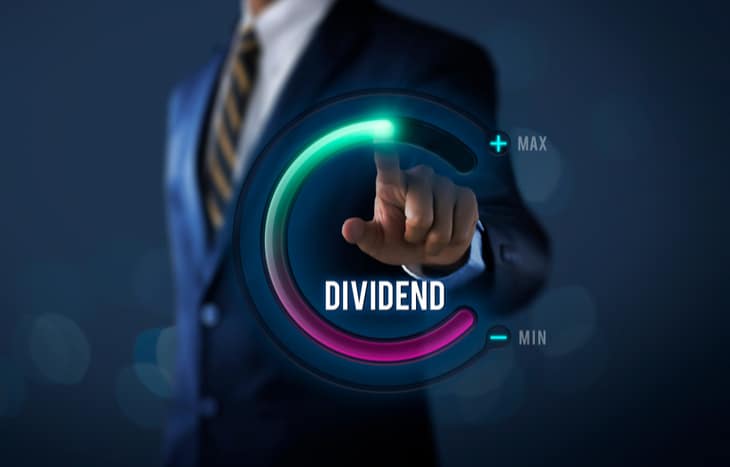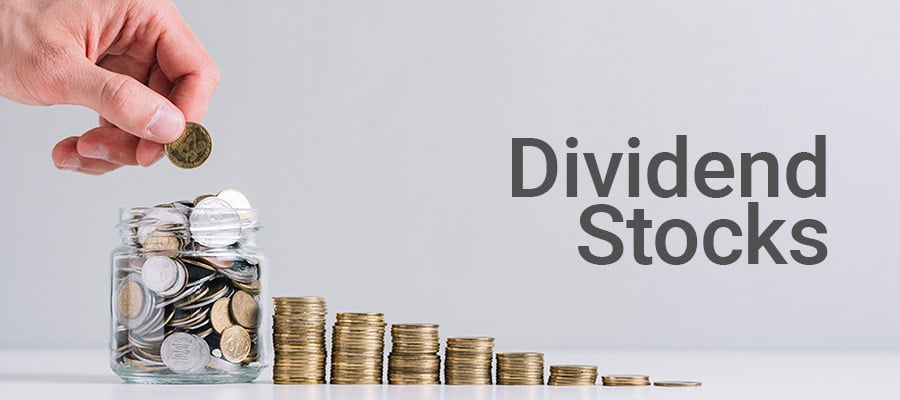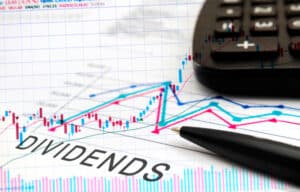For astute investors, high dividend stocks can offer exceptional opportunities.
Who wouldn’t seize the opportunity to receive a sizable return on their investment? But because things might not be as they seem, investors should exercise caution when pursuing high dividend stocks.
The reason for a company’s high dividend could be that its stock has experienced a significant decline in value, signalling possible financial trouble that could jeopardize the company’s ability to continue paying dividends in the future.
If you are looking to invest as an expat or high-net-worth individual, which is what I specialize in, you can email me (advice@adamfayed.com) or use WhatsApp (+44-7393-450-837).
Investors should also be aware of interest rate risk and how dividend stocks lose appeal in a rising rate environment.
What is a Dividend
A dividend stock is a payment made by a company to its shareholders that is decided by the board of directors. Dividend payments are frequently made quarterly and can take the form of cash payments or stock reinvestments.
The dividend yield, which is the dividend per share, is expressed as a percentage of the share price of a company, for example, 2.5%.
If a common shareholder of a dividend-paying company owns the stock on the ex-dividend date or earlier, they are eligible to receive a distribution.
By exercising their voting rights, shareholders must approve dividends. Despite the fact that stock dividends are less common than cash dividends, they are still a possibility. Different exchange-traded funds (ETFs) and mutual funds also distribute dividends.
A dividend is a payment made to shareholders as compensation for their equity investment in a company, and it typically comes from the latter’s net profits. While some profits may be retained by the business to be used for current and future operations, the remainder may be distributed to shareholders as a dividend.
Even when they don’t generate enough profits to continue their established track record of distributions, companies may still pay dividends.
The board of directors has the option to declare dividends at various intervals and at various payout rates.
Dividends may be paid on a regular basis, such as once a month, once every three months, or once a year. For instance, Walmart Inc. (WMT) and Unilever (UL) consistently pay dividends on a quarterly basis.
Non-recurring special dividends can also be paid out by companies, either separately or in addition to a regular dividend. On February 18, 2022, United Bancorp Inc. announced a special dividend of 10 cents per share.

What are Dividend Stocks
Companies that regularly distribute a portion of their earnings to a class of shareholders are said to have dividend-paying stocks. These businesses typically have a solid track record, stable earnings, and a history of returning a portion of those earnings to shareholders.
The payments, which are referred to as dividends, can be made in the form of cash or additional stock. The majority of dividend payments are made quarterly, but some are made monthly, yearly, or even just once in the form of a special dividend.
While dividend stocks are renowned for their consistent dividend payments, those dividends may be reduced during lean financial times in order to preserve cash.
The dividend payout ratio (DPR) is a helpful metric for investors to assess the viability of a company’s dividend payments. The ratio is calculated by dividing the total dividends by the net income.
It reveals to investors how much of the company’s net income is retained by the business to fund future expansion versus how much is distributed to shareholders in the form of dividends.
If the ratio is greater than 100% or negative (i.e., net income is negative), the business might be taking on debt to cover dividend payments. The risk of dividend reduction is comparatively higher in these two cases.
The S&P 500 Dividend Aristocrats Index measures dividend stocks, which have outperformed the overall equity market. Over the past year, the index has generated a total return of -5.1%, outperforming the Russell 1000’s total return of -15.2%.
How Dividend Stocks Work
Simply owning shares of the company through a brokerage account or a retirement plan, such as an IRA, is all that is required to receive dividends on a stock. The money will be deposited into your account automatically after the dividends are paid.
Companies may decide to pay dividends for a variety of reasons, but typically they do so as a means of rewarding their owners, or shareholders, who own the company. If a company doesn’t have enough opportunities for growth to reinvest the money, it may also look to pay dividends.
Although other schedules are also possible, dividends are typically paid on a quarterly basis. Special dividends are one-time payments that can’t be expected to happen again.
The board of directors of a company will approve its dividend policy and divulge its intentions to investors via a press release or a Securities and Exchange Commission filing.
Key dates that investors need to be aware of include:
- Date of announcement: This is the day the business makes its dividend plans public.
- Record date: The dividend payment will be made to shareholders who are listed as such as of this day.
- Ex-dividend date: On this date, stockholders who buy the stock will no longer be eligible to receive the subsequent dividend payment.
- Date of payment: This is the day dividend payments are made to investors.
Risks of High Dividend Stocks
Below, we go into more detail about both potential pitfalls.
1. High Dividends Are Not Always Worth It
Despite the obvious appeal of high dividends, investors should be cautious to avoid purchasing fool’s gold.
Why is the dividend yield so high, an investor should ponder. A high dividend yield may occasionally be a sign of trouble for a company. Due to the company’s shares declining as a result of financial issues, the yield is high.
Additionally, the high yield might not last for very long. A company facing financial difficulties may decide to reduce or eliminate its dividend in an effort to save money. This might cause the stock price of the company to decline even further.
Consider Company XYZ, which trades at $50 and offers a $2.50 annual dividend yielding 5%. The stock drops to $25 as a result of a negative external shock.
The business might not immediately reduce its dividend. So, at first glance, Company XYZ seems to be currently paying a 10% dividend yield.
This high yield, though, might only be fleeting. The same factors that drove down the value of the stock could force Company XYZ to cut its dividend. Other times, a business may decide to maintain its dividend as a thank-you to devoted shareholders.
In order to determine whether a company’s dividend payments can be maintained, investors should consider its financial situation and business operations.
A few important things to look into are the company’s free cash flow, past dividend payout ratio, previous dividend schedules, and whether or not payments have been going up or down.
Many of the top dividend payers are blue chip corporations with a track record of consistently increasing their revenue and profits over the course of many quarters and years. An established track record of regular dividend payments comes with strong underlying foundations.
Having said that, new businesses are constantly establishing themselves as dividend payers, while others find it difficult to build the kind of regularity that investors need. Maintaining persistent due diligence is crucial for investors.
2. Risk of Interest Rate
Stocks with high dividend yields are one type of asset that is vulnerable to interest rate risk. In general, as interest rates decline, high dividend stocks become more alluring.
However, investors lose interest in dividends when the Federal Reserve tightens monetary policy by raising interest rates, which causes a decline in the market for stocks in general and dividend stocks in particular.
This is due to the fact that investors contrast yields with the risk-free return that comes from holding government bonds, such Treasury bonds. Let’s go back to the Company XYZ example from before, which has a 5% dividend yield.
That 5% income will become less appealing if interest rates go from 2% to 4%. This is due to the fact that most investors will choose the security of a guaranteed 4% return over putting their investment at risk for an additional 1% income.
The environment of low interest rates favors dividend stocks as of September 2020. The federal funds rate, which serves as the benchmark for many other loans, is set by the Federal Reserve at 0% to 0.25%. This rate is used for overnight bank lending.
As a result of the difficulties the economy was facing in the midst of the 2020 crisis, the Fed lowered the rate by 100 basis points on March 16, 2020. The last time rates were this low was in 2008, during the financial crisis of 2007–2008, when the Fed relaxed monetary policy.
Through 2015, the Federal Reserve kept interest rates low before gradually raising them to reflect a strengthening economy.
How to Invest in Dividend Stocks
Individual Companies
Purchasing stock in a company that pays dividends is one way to start receiving payments. Many businesses pay dividends, and a number of them have a long history of increasing payouts yearly.
As an illustration, Walmart declared in February 2022 that it was increasing its yearly dividend for the 49th year running. Prior to making any plans for future dividends, you should have faith in the company’s resilience and strength.
By dividing the annual per-share dividend by the stock price, one can determine a company’s dividend yield. You can use this yield, or percentage, to compare between various businesses, mutual funds, and ETFs and figure out where you can get the best value for your money.
High-yield ETFs and Mutual Funds
High dividend yield funds and ETFs can be a desirable choice if you’re looking for a more diversified strategy.
These funds can be used to generate more income than a typical portfolio because they frequently hold companies with higher dividend yields than the industry standard. With annual expenses of just 0.06 percent, the Vanguard High Dividend Yield ETF (VYM) invests in reliable dividend payers like JPMorgan Chase, Johnson & Johnson, and Home Depot.
Dividend-appreciation Funds and ETFs
Companies with a track record of raising dividend payments over time will typically be included in this strategy.
The dividend growers may experience more long-term stock price appreciation due to higher earnings growth rates even though their yield will probably be lower than funds that only invest in high payouts.
Companies like Microsoft, Walmart, Visa, or even Apple are frequently held by funds with a dividend growth strategy.
Dividends can contribute significantly to an investor’s total return, which includes income and price growth. A recent study by Hartford Funds found that since 1960, dividends reinvested were responsible for 84% of the total return of the S&P 500 index.

Taxation of Dividend Stocks
The type of account in which you hold your dividend stocks will determine how they are taxed. You must pay taxes on both the dividends you receive and any realized gains if you own the stocks or dividend-paying funds in an individual or joint account.
The amount of capital gains will vary according to your income level and the length of time you’ve owned the asset.
You won’t pay taxes on dividends or realized gains if you hold dividend stocks or funds in tax-advantaged accounts like a traditional or Roth IRA.
Dividend Stock Investing Strategies
There are typically two strategies to take into consideration for those interested in dividend-investing strategies:
- Dividend yield: Buying stocks or funds with high current dividend yields is the first option. These companies may be undervalued or may be dealing with some business difficulties, both of which have caused a decline in their stock price and an increase in dividend yield. In some circumstances, the dividend may be reduced or even canceled to address financial issues.
- Dividend growth: Owning businesses or investment funds that have steadily raised their dividends over time is an additional choice. These stocks typically yield less than high-dividend stocks, but they typically have strong underlying companies with a track record of rising earnings.
Choosing Between Dividend Stocks and Dividend Funds
Investors will need to decide whether they want to buy dividend stocks or dividend funds as one of their major decisions.
A dividend-focused mutual fund or ETF is a collection of several dividend-paying stocks, whereas a dividend stock is simply a publicly traded company that pays a dividend.
The main advantage of using a fund strategy over picking a small number of individual stocks is that you can spread your risk across a wider range of businesses. The advantage of diversification is this.
On the other hand, if you’re a more seasoned investor and enjoy researching businesses, you might be able to increase your returns by focusing your investments in just a few businesses that you are familiar with and have a thorough understanding of.
A thorough investigation into the potential business challenges that some high-dividend stocks may be facing can help find a promising investment. Dividend funds, however, ought to be a safer option for the majority of investors.
Final Thoughts
Over time, dividends may have a significant impact on your portfolio. They can be reinvested to boost your overall investment return and help you generate income during retirement or even before.
As part of your long-term investment strategy, you may think about investing in dividend-paying companies using a low-cost fund or ETF in a tax-advantaged account.
Pained by financial indecision?

Adam is an internationally recognised author on financial matters with over 830million answer views on Quora, a widely sold book on Amazon, and a contributor on Forbes.


